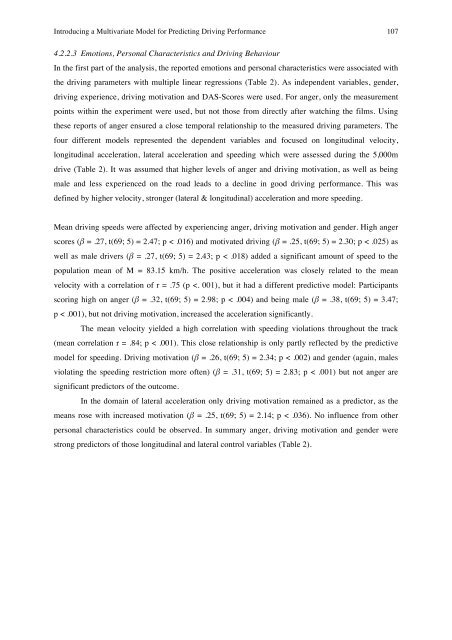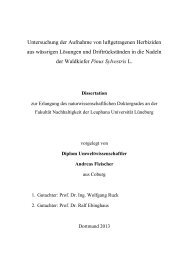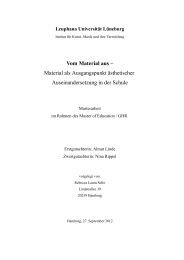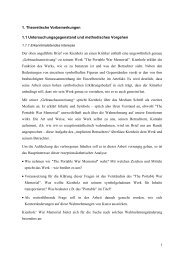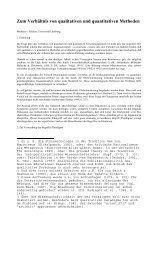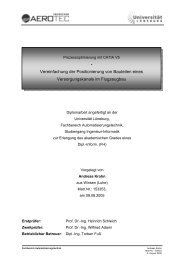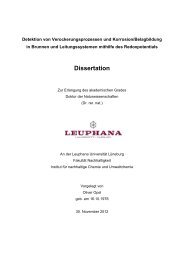Determinants of Emotional Experiences in Traffic Situations ... - OPUS
Determinants of Emotional Experiences in Traffic Situations ... - OPUS
Determinants of Emotional Experiences in Traffic Situations ... - OPUS
You also want an ePaper? Increase the reach of your titles
YUMPU automatically turns print PDFs into web optimized ePapers that Google loves.
Introduc<strong>in</strong>g a Multivariate Model for Predict<strong>in</strong>g Driv<strong>in</strong>g Performance 107<br />
4.2.2.3 Emotions, Personal Characteristics and Driv<strong>in</strong>g Behaviour<br />
In the first part <strong>of</strong> the analysis, the reported emotions and personal characteristics were associated with<br />
the driv<strong>in</strong>g parameters with multiple l<strong>in</strong>ear regressions (Table 2). As <strong>in</strong>dependent variables, gender,<br />
driv<strong>in</strong>g experience, driv<strong>in</strong>g motivation and DAS-Scores were used. For anger, only the measurement<br />
po<strong>in</strong>ts with<strong>in</strong> the experiment were used, but not those from directly after watch<strong>in</strong>g the films. Us<strong>in</strong>g<br />
these reports <strong>of</strong> anger ensured a close temporal relationship to the measured driv<strong>in</strong>g parameters. The<br />
four different models represented the dependent variables and focused on longitud<strong>in</strong>al velocity,<br />
longitud<strong>in</strong>al acceleration, lateral acceleration and speed<strong>in</strong>g which were assessed dur<strong>in</strong>g the 5,000m<br />
drive (Table 2). It was assumed that higher levels <strong>of</strong> anger and driv<strong>in</strong>g motivation, as well as be<strong>in</strong>g<br />
male and less experienced on the road leads to a decl<strong>in</strong>e <strong>in</strong> good driv<strong>in</strong>g performance. This was<br />
def<strong>in</strong>ed by higher velocity, stronger (lateral & longitud<strong>in</strong>al) acceleration and more speed<strong>in</strong>g.<br />
Mean driv<strong>in</strong>g speeds were affected by experienc<strong>in</strong>g anger, driv<strong>in</strong>g motivation and gender. High anger<br />
scores (β = .27, t(69; 5) = 2.47; p < .016) and motivated driv<strong>in</strong>g (β = .25, t(69; 5) = 2.30; p < .025) as<br />
well as male drivers (β = .27, t(69; 5) = 2.43; p < .018) added a significant amount <strong>of</strong> speed to the<br />
population mean <strong>of</strong> M = 83.15 km/h. The positive acceleration was closely related to the mean<br />
velocity with a correlation <strong>of</strong> r = .75 (p


